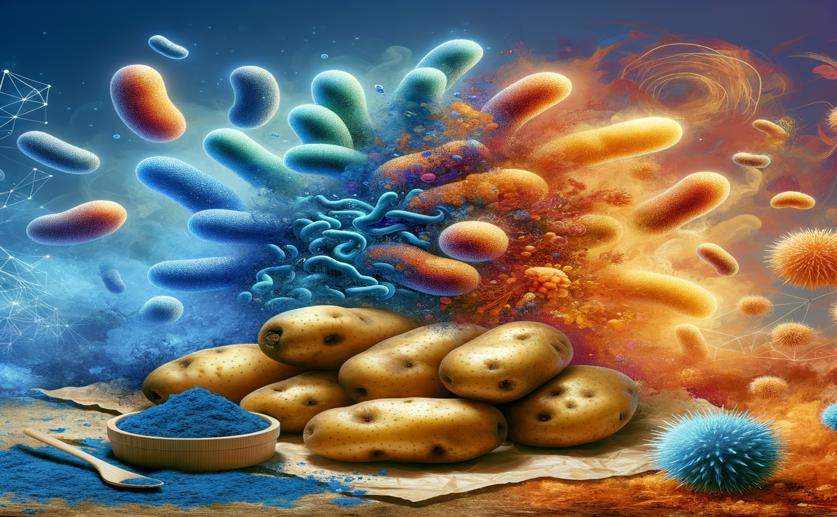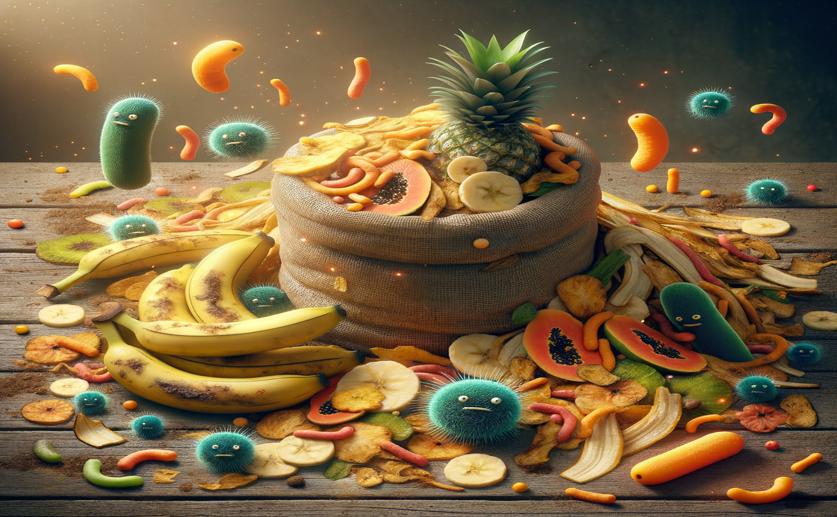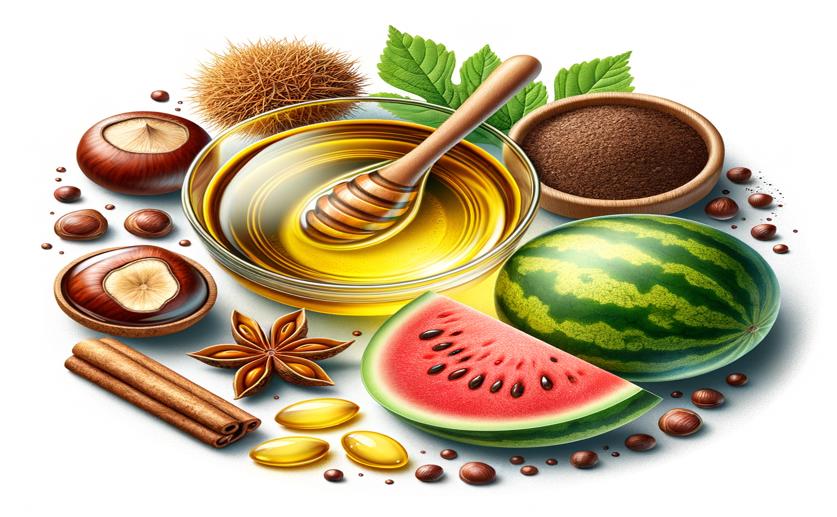
Sustainability News

 19th July, 2024
| Jenn Hoskins
19th July, 2024
| Jenn Hoskins
Better Extraction of Healthy Compounds from Saffron Waste Using Sunflower Oil
Researchers developed an eco-friendly method using ultrasound and sunflower oil to extract phenolic compounds from saffron waste. This sustainable technique enhances antioxidant activity, offering potential applications in food, aquaculture, and cosmetics.
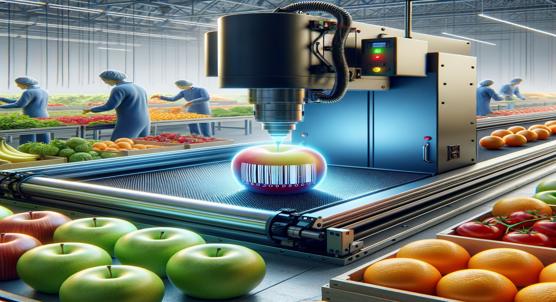
 19th July, 2024
| Jenn Hoskins
19th July, 2024
| Jenn Hoskins
Using CO2 Lasers to Label Fresh Produce: Impact on Quality, Safety, and Cost
Kansas State University found CO2 laser-labeling for produce reduces environmental impact and maintains visual quality but increases microbial risk on text-labeled items. Addressing this is key for safer, sustainable labeling.
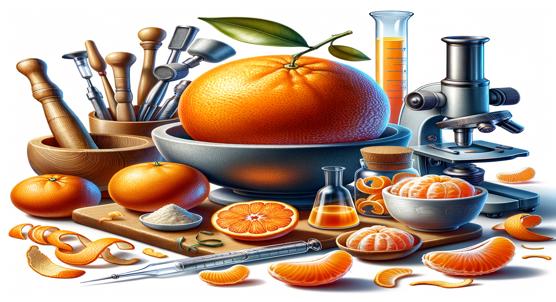
 19th July, 2024
| Greg Howard
19th July, 2024
| Greg Howard
Comparing Methods for Extracting Healthy Compounds from Mandarin Peels
Research reveals that bioactive compounds from citrus waste, like quercetin and hesperidin, have potent anti-cancer properties. Using ultrasound-assisted extraction, these compounds can be efficiently harvested, promoting both health benefits and environmental sustainability.
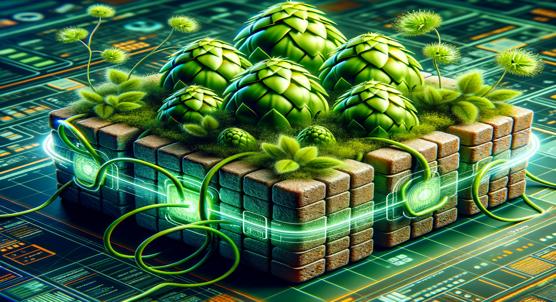
 19th July, 2024
| Jim Crocker
19th July, 2024
| Jim Crocker
Natural Antimicrobial Building Materials Enhanced with Hops and Curly Sorrel
Waste cooking oil composites enriched with hops or sorrel root show promise for construction, offering high strength and significant antibacterial and antifungal properties. This sustainable approach could help mitigate microbial infections in built environments.
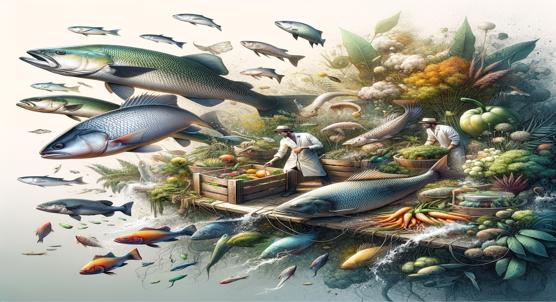
 18th July, 2024
| Greg Howard
18th July, 2024
| Greg Howard
Fish Trade Conceals Household Use of Biodiversity in Wild Food Systems
Cornell researchers reveal that declining biodiversity in Cambodia's Tonlé Sap impacts household food security. Households consume 43% of species caught, selling just 9%. The study underscores the need for sustainable diets to support both human and planetary health.

 17th July, 2024
| Jenn Hoskins
17th July, 2024
| Jenn Hoskins
Eco-Friendly Nanoparticles from Waste for Efficient Dye Removal
Researchers at Universidad Autónoma de Nuevo León have created eco-friendly copper oxide nanoparticles using waste papaya peel. These nanoparticles efficiently degrade dye pollutants, offering a cost-effective and sustainable solution for wastewater treatment.
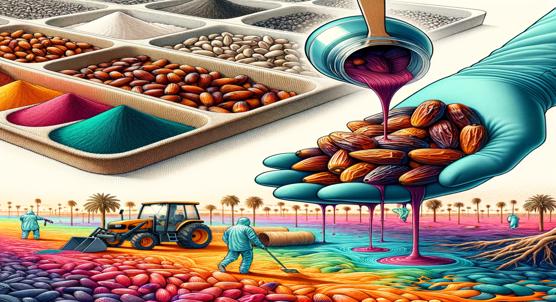
 17th July, 2024
| Jenn Hoskins
17th July, 2024
| Jenn Hoskins
Turning Date Palm Seeds into Eco-Friendly Material for Cleaning Up Dye Pollution
Scientists at King Saud University have developed a method to create hydrochar from date palm seeds using microwave-assisted hydrothermal carbonization. The optimized process enhances the hydrochar's ability to adsorb pollutants, making it effective for wastewater treatment.
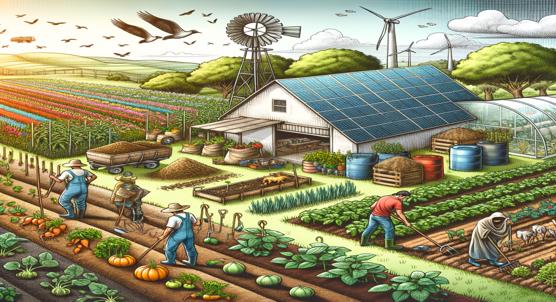
 17th July, 2024
| Jenn Hoskins
17th July, 2024
| Jenn Hoskins
Challenges Faced by Organic Farmers in Transition to Eco-Friendly Farming
Organic farming in Central Uganda shows promise with diverse crop adaptation and integrated animal farming. However, challenges like limited waste recycling and water harvesting equipment remain. Investing in these areas could enhance sustainability and resilience.
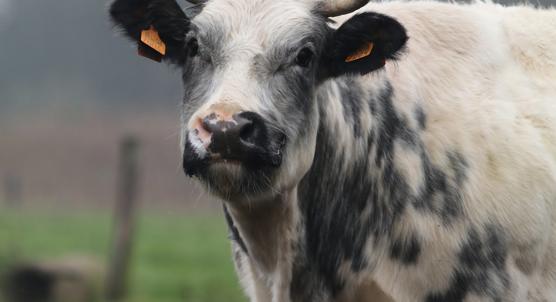
 16th July, 2024
| Jenn Hoskins
16th July, 2024
| Jenn Hoskins
Carbon Footprint of Mixed Farming and Grazing Beef Systems Using Long-Term Data
A study by the Instituto Nacional de Investigación Agropecuaria reveals that mixed crop-livestock systems can significantly reduce greenhouse gas emissions through better soil carbon management, offering a sustainable alternative to high-input farming in South America.
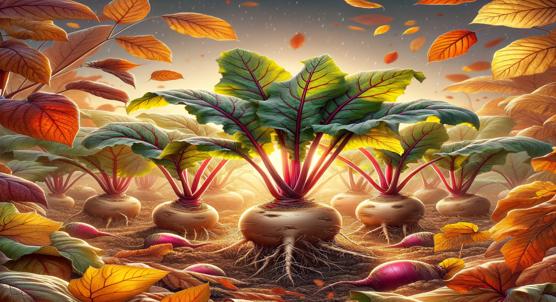
 16th July, 2024
| Jenn Hoskins
16th July, 2024
| Jenn Hoskins
A New Way to Grow Sugar Beets Without Extra Water by Planting in Autumn
Researchers in Türkiye found that autumn-sown sugar beets can thrive in the Aegean Coastal Zone without irrigation using ridge sowing. This method conserves water and ensures high yields and sugar content, offering a sustainable alternative for water-scarce regions.

 14th July, 2024
| Jenn Hoskins
14th July, 2024
| Jenn Hoskins
Green Techniques to Boost Antioxidant Extraction from Red Prickly Pear Peels
A study by Universidad Nacional de Moquegua optimized extracting antioxidants from prickly pear peels using advanced techniques. Findings show specific solvents and temperatures enhance efficiency, paving the way for new applications in food, nutraceuticals, and pharmaceuticals.

 13th July, 2024
| Jenn Hoskins
13th July, 2024
| Jenn Hoskins
Growing Coastal Marine Microalgae in Wastewater from a Salmon Farming System
A University of Agder study shows microalgae can thrive in aquaculture wastewater, effectively removing nutrients like nitrate and phosphate. This sustainable approach enhances waste management in fish farming and supports a circular bioeconomy in aquaculture.
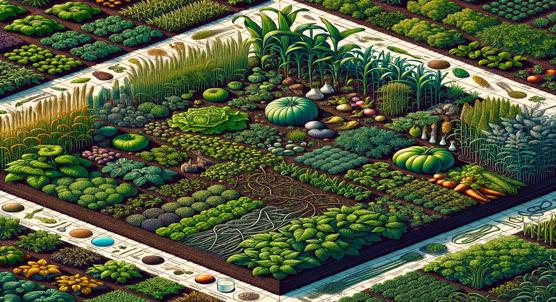
 13th July, 2024
| Jim Crocker
13th July, 2024
| Jim Crocker
Factors Affecting Mixed Planting Success in Farmers' Fields
A study by Agroscope on intercropping winter oilseed rape with frost-sensitive plants reveals yield variability due to pest damage, temperature, and plant mixture composition. Effective pest management and optimized fertilization are key to stable yields.
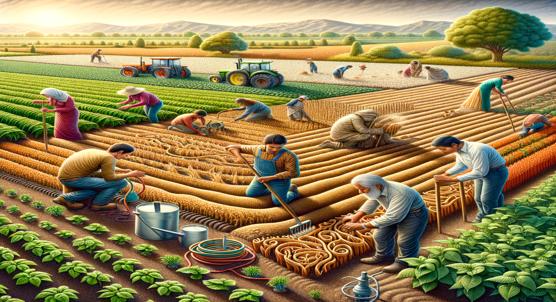
 12th July, 2024
| Greg Howard
12th July, 2024
| Greg Howard
Types of Climate Change Adaptation Among Large-Scale Crop Farmers
Farmers in Romania's southern lowlands are adapting to increased heatwaves and droughts. A study identified three adaptation strategies: efficiency, substitution, and redesign. The findings stress the importance of targeted support to boost farm resilience against climate change.

 12th July, 2024
| Greg Howard
12th July, 2024
| Greg Howard
Heat and Radiation Greatly Reduce Microbe Survival in Deep Underground Storage
A study reveals that high temperatures, rather than irradiation, significantly reduce microbial activity in bentonite, a key barrier in nuclear waste storage. This insight helps predict and enhance the long-term stability of deep geological repositories.
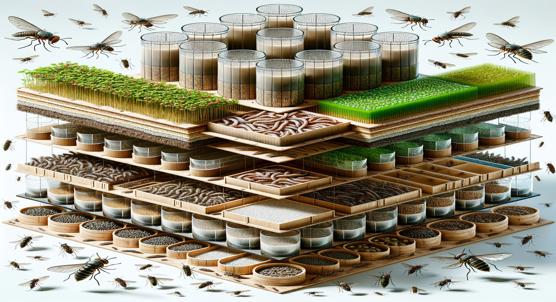
 12th July, 2024
| Jenn Hoskins
12th July, 2024
| Jenn Hoskins
A Multilayered Farming System for Producing Black Soldier Fly Larvae
The University of Malta's study shows mealworm and black soldier fly larvae can convert kitchen waste into protein-rich biomass, offering a sustainable solution for animal and aquaculture feed, aligning with the UN's goals for ending hunger and promoting responsible consumption.
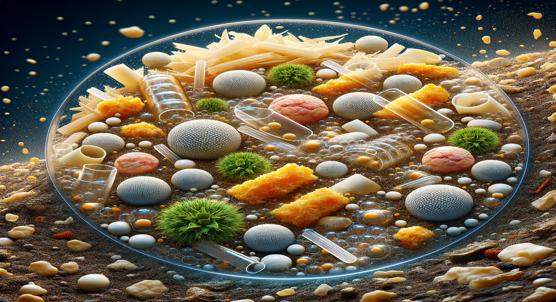
 12th July, 2024
| Greg Howard
12th July, 2024
| Greg Howard
Biodegradation of Bioplastic and Oregano Oil Mix in Simulated Soil Conditions
Researchers at Universidade Federal de Santa Catarina found that adding oregano essential oil to PHBV biopolymer films significantly boosts their biodegradation in soil, achieving up to 46% mass loss in 12 weeks. This advance could enhance sustainable packaging solutions.

 11th July, 2024
| Jim Crocker
11th July, 2024
| Jim Crocker
Updated Review on Pollution Communication in the Arctic
Arctic communities face mercury exposure from traditional diets. A study by the Inuit Circumpolar Council - Canada highlights the need for better risk communication and social media use to balance nutritional benefits and contaminant risks, emphasizing culturally tailored advice.

 3rd July, 2024
| Jenn Hoskins
3rd July, 2024
| Jenn Hoskins
Boosting Seaweed Growth with a Two-Kelp Strategy
Interest in kelp farming is shifting towards bioplastics, requiring large biomass yields. A study showed that growing two kelp species together can optimize space and boost production, offering a promising approach for sustainable large-scale kelp farming.
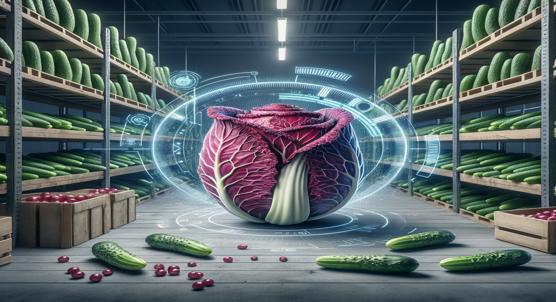
 3rd July, 2024
| Jim Crocker
3rd July, 2024
| Jim Crocker
Red Cabbage Film as an Eco-Friendly Sensor for Food Safety in Stored Cucumbers
Scientists have developed an eco-friendly biopolymer film using red cabbage extract and bacterial cellulose to detect contamination and gamma radiation in cucumbers. This smart packaging changes color with pH shifts, offering real-time food safety and quality monitoring.
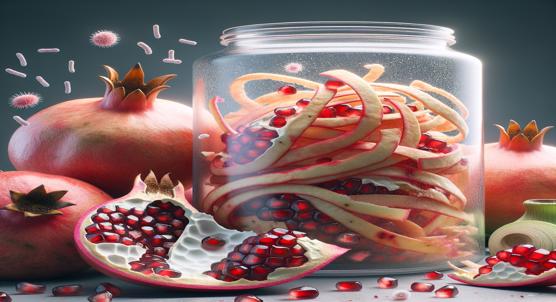
 29th June, 2024
| Jenn Hoskins
29th June, 2024
| Jenn Hoskins
Pomegranate Peel Extract: A Potential Antimicrobial Ingredient from Food Waste
A study by the National Institute of Technology Rourkela shows that using ionic gelation to encapsulate pomegranate peel extract enhances its stability and antibacterial properties, offering a natural alternative to synthetic antimicrobials for food safety and pharmaceuticals.

 28th June, 2024
| Jim Crocker
28th June, 2024
| Jim Crocker
How Street Trees and Urban Plants Reduce Harmful UV Rays
Research from the University of Southern Queensland shows that tree shade can reduce harmful UV radiation by up to 91%, enhancing walkability and UV protection in urban areas. Planting specific tree species can significantly improve residents' health and quality of life.

 28th June, 2024
| Greg Howard
28th June, 2024
| Greg Howard
Balancing Wildlife Conservation and Community Challenges in Mankira Forest
Human-wildlife conflicts in Ethiopia's Mankira Forest cause significant crop and livestock losses, with 95% of locals affected. The study highlights the need for targeted education, better management, and community involvement to balance conservation and human needs.
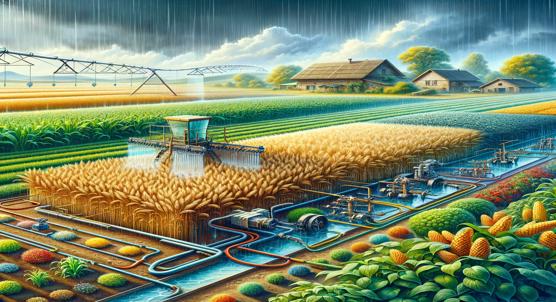
 26th June, 2024
| Jenn Hoskins
26th June, 2024
| Jenn Hoskins
How Rainfall, Crop Mix, and Farming Methods Boost Farm Yields in Europe
Innovative farming like cereal-legume intercropping can boost yields by 30% while enhancing sustainability, says a James Hutton Institute study. Factors like organic fertilizer and rainfall affect success, offering a path to more productive, eco-friendly agriculture.

 25th June, 2024
| Jenn Hoskins
25th June, 2024
| Jenn Hoskins
Forest Recovery After Wildfire in the Northern Rocky Mountains
Field surveys in the Northern Rocky Mountains reveal robust conifer regeneration on burned sites, challenging the belief that climate change will turn forests into grasslands. Using machine learning, this study offers new insights into forest resilience and post-fire recovery.
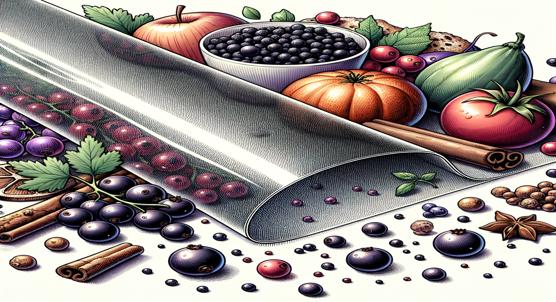
 23rd June, 2024
| Jenn Hoskins
23rd June, 2024
| Jenn Hoskins
Smart Food Freshness Film Using Black Currant and Cinnamon Ingredients
Xiamen University Malaysia developed a smart packaging film using black currant pigments and cinnamon oil to detect food spoilage. Despite reduced antioxidant activity and no antimicrobial effects, the film changes color with freshness, offering real-time spoilage monitoring.

 23rd June, 2024
| Greg Howard
23rd June, 2024
| Greg Howard
How Can Better Forest Management Reduce Noise from Wind Turbines?
Recent research reveals that forests and tallgrass prairies can effectively reduce noise pollution, but their efficiency varies by season. This insight can help urban planners design quieter, more livable cities by strategically using different types of vegetation.
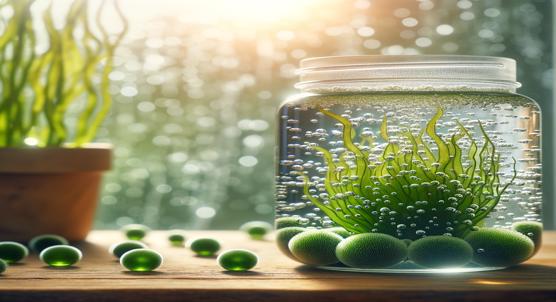
 21st June, 2024
| Jim Crocker
21st June, 2024
| Jim Crocker
Boosting Algae Growth and Healthy Fats Using Filtered Whey
University College Dublin researchers found that nano-filtered whey permeate, a dairy by-product, can sustainably grow the microalga Nannochloropsis oceanica. This method efficiently produces valuable omega-3 fatty acids, while also addressing waste management issues.
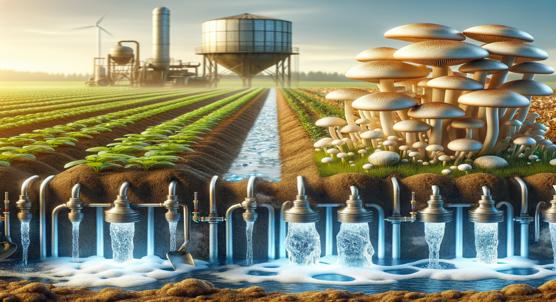
 17th June, 2024
| Jenn Hoskins
17th June, 2024
| Jenn Hoskins
Boosting Soil Nitrogen Using Mushroom-Based Water Treatment
A study from the University of Illinois explores using Trametes versicolor fungus to treat hydrothermal liquefaction byproduct, boosting its nitrate and ammonium levels for hydroponic use, offering a sustainable solution for crop growth and waste disposal.

 17th June, 2024
| Jenn Hoskins
17th June, 2024
| Jenn Hoskins
Lotus Flower Extract Films as Sustainable pH Indicators for Food Packaging
Researchers at King Mongkut's University have developed an eco-friendly, pH-sensitive film using alginate, PVA, garlic, and lotus flower extract. This innovative film changes color to indicate food spoilage, offering a sustainable solution for real-time food safety monitoring.
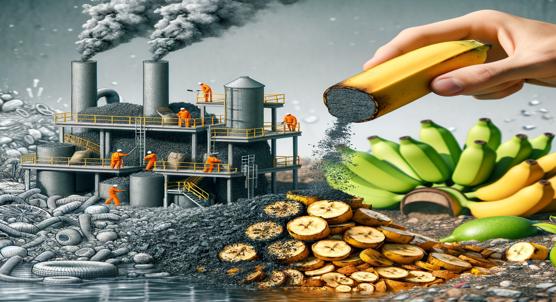
 16th June, 2024
| Greg Howard
16th June, 2024
| Greg Howard
Creating Porous Biochar from Banana Waste to Clean Cadmium Pollution in Water
Research from South China Agricultural University shows biochar made from banana straw can effectively remove cadmium from the environment and prevent the spread of fusarium wilt, offering a sustainable solution to these pressing agricultural issues.
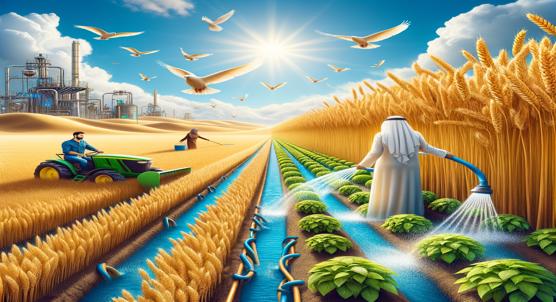
 15th June, 2024
| Jenn Hoskins
15th June, 2024
| Jenn Hoskins
Boosting Wheat Yields with Better Watering, Nutrition, and Organic Methods
Recent research by Al-Azhar University shows that combining drip irrigation, foliar potassium bicarbonate, and effective compost methods boosts wheat growth, physiology, and yield. This integrated approach could significantly enhance global food security.

 15th June, 2024
| Jenn Hoskins
15th June, 2024
| Jenn Hoskins
Improving Green Energy from Reishi Mushroom Biomass with Controlled Combustion
China's Ministry of Ecology and Environment has found that Ganoderma lucidum biomass can be an efficient, sustainable energy source. The study highlights how different atmospheric conditions and heating rates affect combustion efficiency, aiding the shift from fossil fuels.
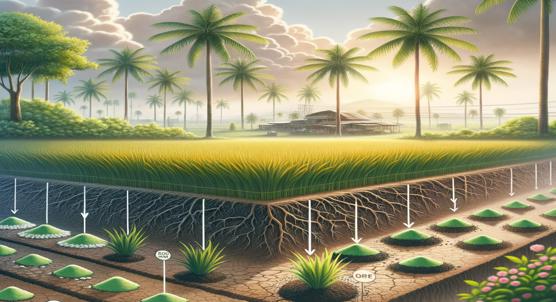
 14th June, 2024
| Greg Howard
14th June, 2024
| Greg Howard
Improving Soil Treatments to Reduce Arsenic in Rice Grown on Contaminated Land
Researchers from Sylhet Agricultural University found that using biochar, vermicompost, and duckweed can reduce arsenic in rice by up to 56% and boost yields by 44%. These organic amendments offer a sustainable way to mitigate arsenic contamination and improve public health.
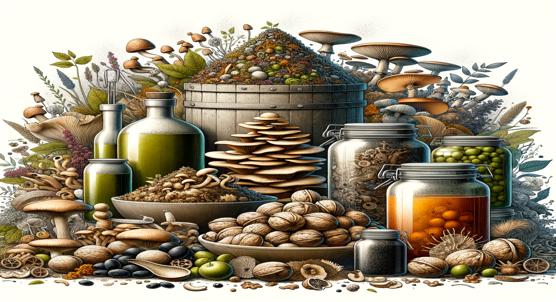
 12th June, 2024
| Jenn Hoskins
12th June, 2024
| Jenn Hoskins
Boosting Nutritional Value of Olive and Walnut Waste Using Mushroom Fermentation
Transforming olive mill stone waste and walnut shells into protein-rich animal feed using solid-state fermentation offers a sustainable solution to waste disposal and feed scarcity. This innovative process boosts protein content, reduces lignin, and supports a circular economy.

 7th June, 2024
| Jenn Hoskins
7th June, 2024
| Jenn Hoskins
Eco-Friendly Extraction and Use of Yellow Curcumin Dye for Silk Coloring
Researchers at Government College University Faisalabad have developed an eco-friendly dyeing method using Amba Haldi and microwave technology. This sustainable alternative to synthetic dyes enhances color depth on silk while reducing environmental harm.

 5th June, 2024
| Jenn Hoskins
5th June, 2024
| Jenn Hoskins
Comparing Sandy Beach and Dune Changes Using Lidar and Drone Technology
Apple's built-in lidar tech proves to be a reliable, cost-effective tool for mapping coastal changes, offering a viable alternative to traditional, more expensive methods. This innovation can enhance coastal management and resilience planning through detailed, accessible data.

 4th June, 2024
| Greg Howard
4th June, 2024
| Greg Howard
Comparing Green Biodiesel from New Sources for Cleaner and Efficient Engines
A study by PDPM IIITDM shows biodiesel blends from peppermint, water hyacinth, tamarind, and snake gourd can enhance engine performance and cut emissions. These blends reduce PM, NOx, and CO2, supporting sustainable energy goals.
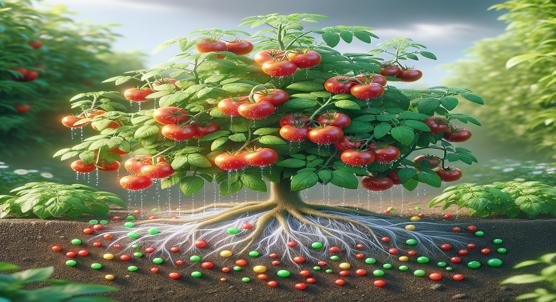
 3rd June, 2024
| Jenn Hoskins
3rd June, 2024
| Jenn Hoskins
Innovative Hydrogel Fertilizer Enhances Tomato Growth and Water Retention
Researchers developed an eco-friendly hydrogel that slowly releases nitrogen, enhancing crop growth even under water stress. Tested on tomatoes, it boosted yields up to 43%, showing promise for sustainable agriculture and reducing environmental impacts.
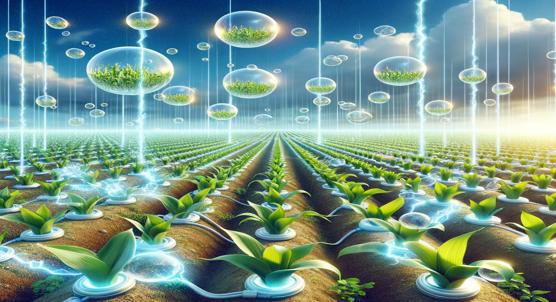
 2nd June, 2024
| Greg Howard
2nd June, 2024
| Greg Howard
Electric Field Air Bubbles Improve Crop Growth with Less Fertilizer
Electric field-based air nanobubbles (EF-ANBs) significantly boost crop germination and growth, reducing the need for fertilizers. This innovative approach enhances plant health and supports sustainable farming practices, promising a greener future for agriculture.
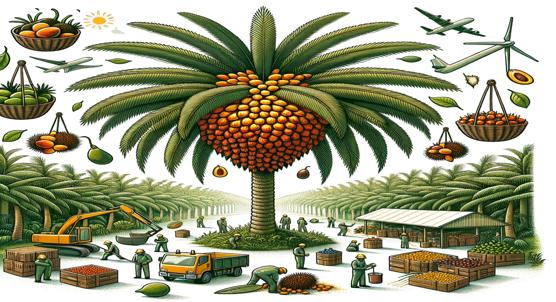
 1st June, 2024
| Greg Howard
1st June, 2024
| Greg Howard
Exploring Sustainable Commercial Use of Palm Fruits
The Amazon's palm fruits hold untapped economic potential. A study highlights açaí as the top candidate for market development due to its abundance and demand. Majo shows promise but needs better processing, while palma real and motacu face low demand and expertise issues.
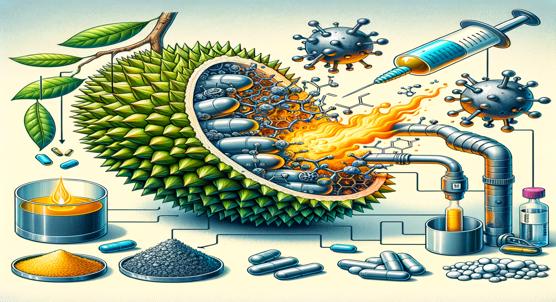
 30th May, 2024
| Jim Crocker
30th May, 2024
| Jim Crocker
Boosting Antibiotic Breakdown Using Durian Peel Biochar and Special Metal Oxides
Researchers at Le Quy Don Technical University have developed a novel catalyst, CuCoFe-LDO/BCD, derived from durian shells, that degrades over 95% of ciprofloxacin in water within 10 minutes, offering a promising solution to combat antibiotic pollution and resistance.
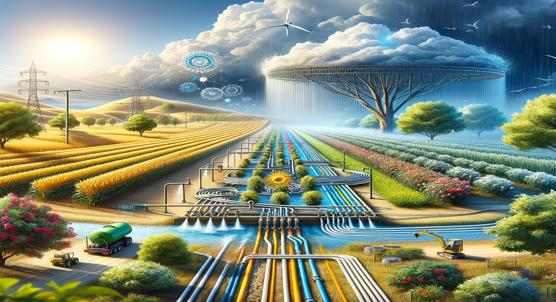
 28th May, 2024
| Jim Crocker
28th May, 2024
| Jim Crocker
Optimal Water Use for Crops and Irrigation Planning in a Changing Climate
Recent research in southern Ethiopia reveals that climate change will increase crop water needs, requiring more frequent irrigation. Optimal land use strategies can balance economic gains and food security, guiding policymakers to promote climate-resilient farming.
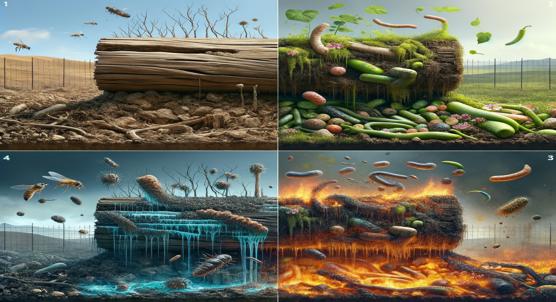
 24th May, 2024
| Jenn Hoskins
24th May, 2024
| Jenn Hoskins
How Climate Change and Nutrients Affect Decomposition: A Comprehensive Study
Climate change impacts litter decomposition in cold biomes, crucial for carbon cycling. A study finds direct warming speeds decomposition, but shrub expansion with slow-decomposing leaves could slow it, partly counteracting warming effects. Litter quality remains a key factor.

 23rd May, 2024
| Jenn Hoskins
23rd May, 2024
| Jenn Hoskins
Using Watermelon Rind to Clean Water from Copper, Zinc, and Cloudiness
Researchers at the University of Hassan II-Casablanca found that watermelon rinds can effectively treat contaminated water, removing up to 99.88% of copper and 99.21% of turbidity. This eco-friendly method offers a sustainable alternative to costly chemical coagulants.

 22nd May, 2024
| Jenn Hoskins
22nd May, 2024
| Jenn Hoskins
Optimizing Natural Methods to Extract Antioxidants from Olive Waste
Researchers at Universidad de la República have optimized a sustainable method using lactic acid-glucose solvents to extract valuable antioxidants from olive pomace. This green approach enhances the use of olive oil by-products, offering higher yields than conventional methods.
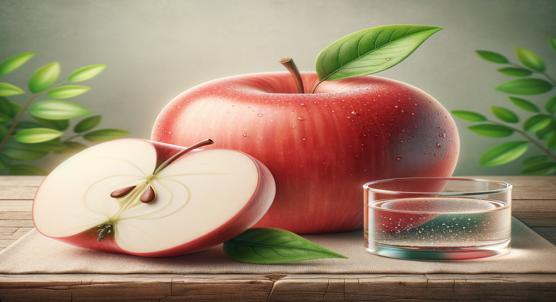
 20th May, 2024
| Jenn Hoskins
20th May, 2024
| Jenn Hoskins
Extracting Healthy Compounds from Young Red Apples Using Eco-Friendly Methods
Young red-fleshed apples are rich in polyphenols, which have health benefits. Researchers found that eco-friendly solvents can effectively extract these compounds, maintaining their bioactivity, making them ideal for functional foods and sustainable applications.

 20th May, 2024
| Jenn Hoskins
20th May, 2024
| Jenn Hoskins
Traditional Plant Knowledge in a Remote Mountain Community
A study in Lotkuh, Pakistan, documented 150 plant species used for food, medicine, and more, highlighting the rich ethnobotanical knowledge of the region. High consensus among locals underscores the importance of preserving this cultural heritage for future applications.

 19th May, 2024
| Greg Howard
19th May, 2024
| Greg Howard
Enhanced Biochar Effectively Removes Chromium from Contaminated Water
Arizona State University has developed a sustainable method to remove toxic chromium from water using biochar made from pineapple skins. This modified biochar efficiently adsorbs both Cr(VI) and Cr(III), offering a cost-effective solution to groundwater pollution.
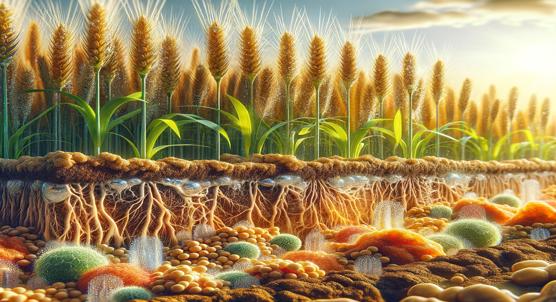
 19th May, 2024
| Jim Crocker
19th May, 2024
| Jim Crocker
Boosting Wheat Yields in Salty Soil with Poultry Manure and Helpful Microbes
Soil salinity threatens global food security by harming wheat growth. A study shows that using specific microbes and poultry manure can improve wheat yield in saline soil, offering a sustainable solution to enhance crop productivity and meet rising food demands.
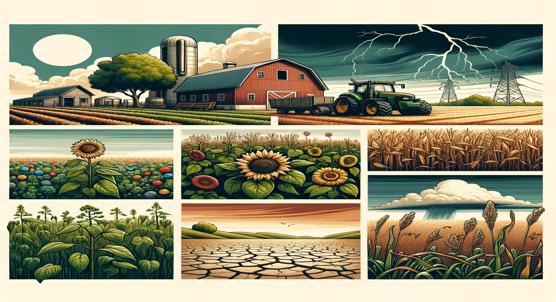
 16th May, 2024
| Jim Crocker
16th May, 2024
| Jim Crocker
Combining Key Factors to Assess Farming Risks from Climate Change
Climate change threatens Anuradhapura's agriculture in Sri Lanka. A study using GIS and indicators reveals high vulnerability, with 25% of the area at very high risk. This highlights the urgent need for targeted adaptation strategies to ensure food security.

 12th May, 2024
| Greg Howard
12th May, 2024
| Greg Howard
Eco-Friendly Creation of Silver-Infused Nanocomposite for Water Purification
Scientists develop a plant-based nanocomposite that breaks down harmful dyes in water, offering a dual-purpose solution for pollution and cancer treatment.
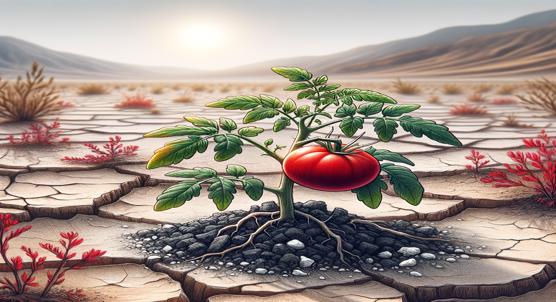
 10th May, 2024
| Greg Howard
10th May, 2024
| Greg Howard
How Biochar Helps Tomatoes Grow in Drought and Salty Conditions
Biochar helps tomatoes grow in water-scarce, salty conditions by improving soil moisture and nutrient uptake, leading to healthier plants and better yields.
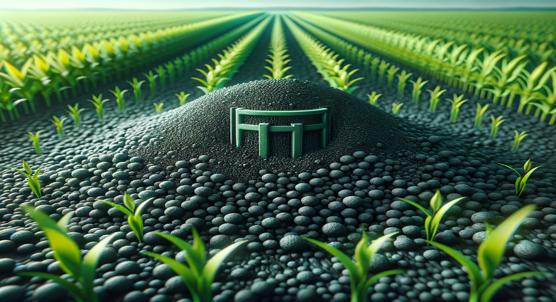
 9th May, 2024
| Jim Crocker
9th May, 2024
| Jim Crocker
Iron-Enhanced Biochar: A Greener Fertilizer for Farming
Turning banana peels into iron-rich biochar, researchers at the University of the Punjab have created an eco-friendly soil enhancer that boosts crop growth and reduces pollution.
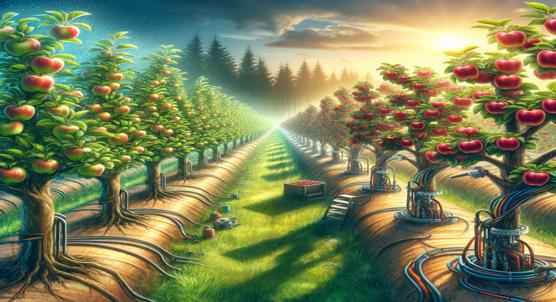
 8th May, 2024
| Greg Howard
8th May, 2024
| Greg Howard
Adopting Better Farming Methods Boosts Apple Growth Despite Challenges
Nepal's apple farmers adopt sustainable practices for quality produce, facing challenges like input access and transport, vital for local economy and health.
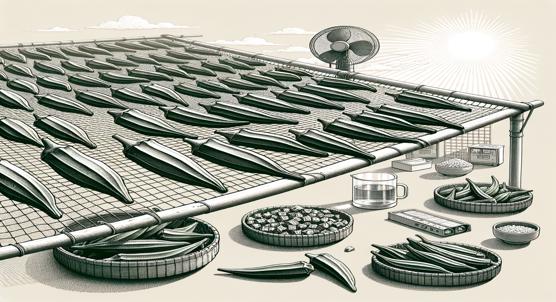
 6th May, 2024
| Jenn Hoskins
6th May, 2024
| Jenn Hoskins
Exploring Efficient Solar Drying Methods for Okra
Researchers have developed a solar-powered drying system for okra, promising a sustainable way to preserve food and reduce waste, with a payback period of just over a year.

 6th May, 2024
| Jenn Hoskins
6th May, 2024
| Jenn Hoskins
Microwave Drying of Pre-treated Abalone Slices: Efficiency and Protein Quality
New drying technique using electric fields and microwaves reduces energy use by 33% and improves quality of dried Chilean abalone.
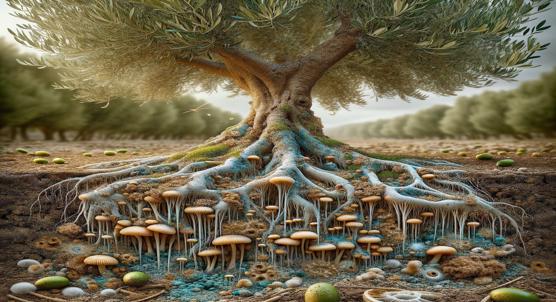
 5th May, 2024
| Jenn Hoskins
5th May, 2024
| Jenn Hoskins
Enhancing Plant Survival in Antimony-Polluted Soil Using Fungi and Olive Waste
Exploring natural ways to combat soil pollution, a study reveals how oats can resist toxic metal contamination with the help of fungi and olive waste.
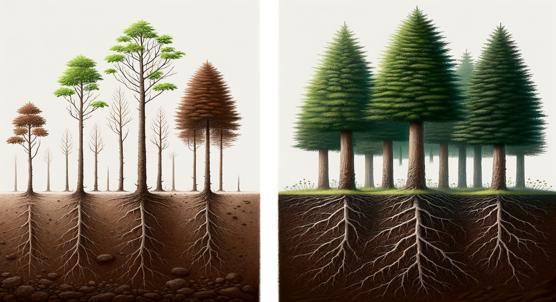
 5th May, 2024
| Greg Howard
5th May, 2024
| Greg Howard
Growth of Young Forest Trees in Peat-Free and Low-Peat Soils
Finnish scientists find eco-friendly alternatives to peat for growing tree seedlings, paving the way for more sustainable forestry.

 4th May, 2024
| Jenn Hoskins
4th May, 2024
| Jenn Hoskins
How Land Use Affects Leaf Decomposition in Tropical Streams
Tropical streams suffer as land-use changes, but preserving vegetation strips along banks can protect vital leaf decomposition processes.
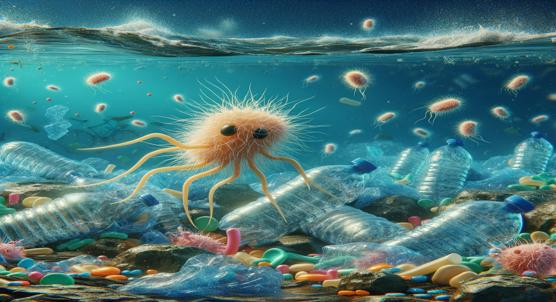
 30th April, 2024
| Jenn Hoskins
30th April, 2024
| Jenn Hoskins
Plastic-Invading Microbes from Sewage to Sea
Scientists at Bangor University are exploring how plastic waste might help antibiotic-resistant bacteria spread, posing a threat to health and ecosystems.
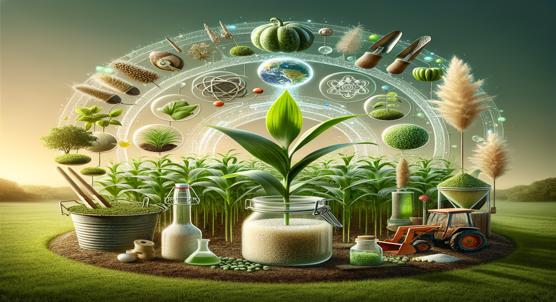
 28th April, 2024
| Jenn Hoskins
28th April, 2024
| Jenn Hoskins
Eco-Friendly Gel Mix for Better Crop Growth
Researchers have developed a new hydrogel that improves water retention and fertilizer release, promising advancements for agriculture and water conservation.
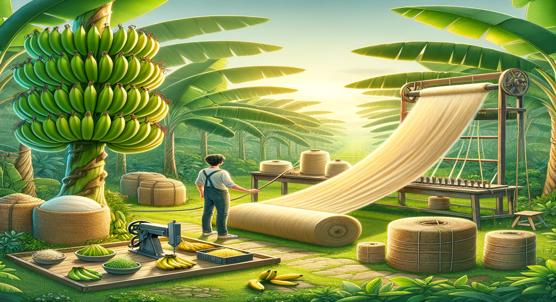
 27th April, 2024
| Jim Crocker
27th April, 2024
| Jim Crocker
Exploring Banana Fiber for Eco-Friendly Ropes and Fabrics
Banana-plantain stalk fibers are being developed into eco-friendly ropes and fabrics, offering a sustainable alternative to synthetic materials and helping reduce plastic waste.

 25th April, 2024
| Greg Howard
25th April, 2024
| Greg Howard
Spotting Various Plastics and Materials with Fluorescence Tech
Researchers have developed a new, quick method to distinguish harmful microplastics from natural materials in soil, aiding in ecological risk assessment.
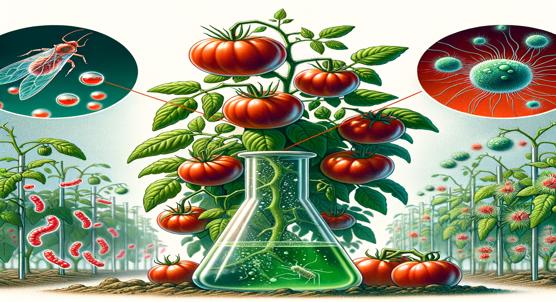
 25th April, 2024
| Greg Howard
25th April, 2024
| Greg Howard
Combining Natural Plant Extracts with Bacteria to Control Tomato Pests
Researchers find that combining neem extract with a specific bacteria can kill 99% of tomato pinworm larvae, offering a sustainable pest control method.
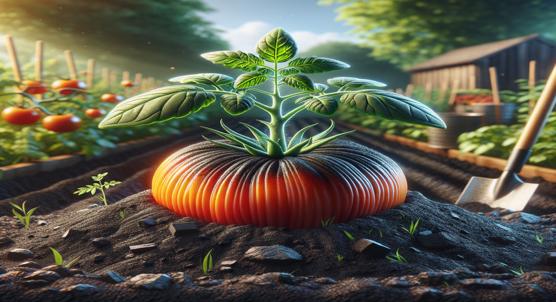
 24th April, 2024
| Jenn Hoskins
24th April, 2024
| Jenn Hoskins
Biochar from Waste Boosts Tomato Plant Growth
Researchers at Sapienza University of Rome have developed a slow-release fertilizer from licorice waste, boosting tomato health and reducing environmental harm.
